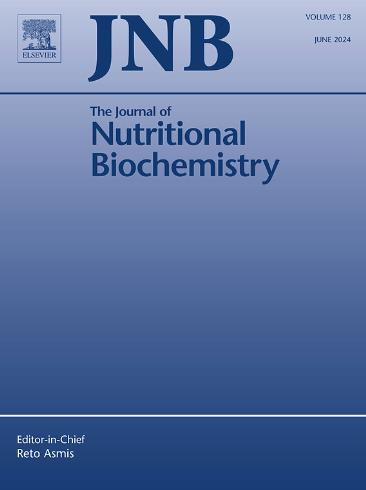Ergothioneine as a functional nutraceutical: Mechanisms, bioavailability, and therapeutic implications
IF 4.8
2区 医学
Q1 BIOCHEMISTRY & MOLECULAR BIOLOGY
引用次数: 0
Abstract
Ergothioneine (EGT), a naturally occurring sulfur-containing antioxidant, has gained significant attention owing to its potent cytoprotective, anti-inflammatory, and neuroprotective properties. As a dietary-derived compound predominantly found in mushrooms, EGT exhibits remarkable stability and bioavailability, facilitated by a specific ergothioneine transporter that is highly expressed in mammalian tissues. Its ability to scavenge reactive oxygen and nitrogen species effectively mitigates oxidative stress, which is a key factor in the pathogenesis of various chronic diseases, including cardiovascular disorders, neurodegenerative conditions, and cancer. Emerging evidence has highlighted the role of EGT in modulating key signaling pathways involved in inflammation, apoptosis, and cellular homeostasis, suggesting its potential as a therapeutic agent. Clinical and preclinical studies have indicated its involvement in metabolic regulation, endothelial protection, and attenuation of neurodegeneration, further reinforcing its significance as a functional nutraceutical agent. This review provides a comprehensive analysis of EGT, including its biosynthesis, dietary sources, absorption mechanisms, and metabolism, and elucidates its therapeutic potential and mechanistic underpinnings for disease prevention and management. By summarizing recent advances in EGT research, this review aims to guide future investigations and support its broader application in clinical and nutritional sciences.

麦角硫因作为功能性营养品:机制、生物利用度和治疗意义。
麦角硫因(EGT)是一种天然含硫抗氧化剂,因其有效的细胞保护、抗炎和神经保护特性而受到广泛关注。作为一种主要存在于蘑菇中的膳食衍生化合物,EGT具有显著的稳定性和生物利用度,这是由一种在哺乳动物组织中高度表达的麦角硫因特异性转运体促进的。它清除活性氧和氮的能力有效地减轻了氧化应激,这是各种慢性疾病发病的关键因素,包括心血管疾病、神经退行性疾病和癌症。新出现的证据强调了EGT在调节炎症、凋亡和细胞稳态等关键信号通路中的作用,表明其作为一种治疗药物的潜力。临床和临床前研究表明其参与代谢调节、内皮保护和神经变性的衰减,进一步加强了其作为功能性营养制剂的重要性。本文综述了EGT的生物合成、膳食来源、吸收机制和代谢等方面的研究进展,并阐述了EGT的治疗潜力及其在疾病预防和管理方面的机制基础。本文综述了EGT的最新研究进展,旨在指导今后的研究,并支持其在临床和营养科学中的广泛应用。
本文章由计算机程序翻译,如有差异,请以英文原文为准。
求助全文
约1分钟内获得全文
求助全文
来源期刊

Journal of Nutritional Biochemistry
医学-生化与分子生物学
CiteScore
9.50
自引率
3.60%
发文量
237
审稿时长
68 days
期刊介绍:
Devoted to advancements in nutritional sciences, The Journal of Nutritional Biochemistry presents experimental nutrition research as it relates to: biochemistry, molecular biology, toxicology, or physiology.
Rigorous reviews by an international editorial board of distinguished scientists ensure publication of the most current and key research being conducted in nutrition at the cellular, animal and human level. In addition to its monthly features of critical reviews and research articles, The Journal of Nutritional Biochemistry also periodically publishes emerging issues, experimental methods, and other types of articles.
 求助内容:
求助内容: 应助结果提醒方式:
应助结果提醒方式:


